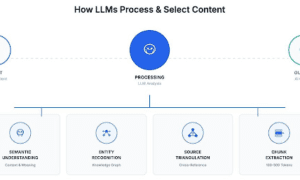Introduction:
Technology continues to revolutionize the way we experience and interact with our surroundings. One notable advancement that has seamlessly integrated into our journeys is the evolution of connected luggage. From the early days of basic Bluetooth connectivity to the sophisticated incorporation of GPS technology, the travel industry has witnessed a remarkable transformation.
The Emergence of Bluetooth Connectivity:
The inception of connected luggage can be traced back to the integration of Bluetooth technology. As travelers sought more convenience and control over their belongings, luggage manufacturers began incorporating Bluetooth connectivity into their designs. This innovation allowed users to sync their smartphones with their suitcases, enabling features like remote locking, real-time tracking, and proximity alerts.
The introduction of Bluetooth connectivity marked a significant shift in the way people approached travel. No longer were travelers solely reliant on traditional locks and manual tracking; instead, they could effortlessly manage their luggage through intuitive mobile applications. The convenience of remotely securing your suitcase or receiving an alert when it was in close proximity added a layer of security and peace of mind for globetrotters.
Enhanced Security and Real-time Tracking:
As technology continued to advance, connected luggage evolved beyond basic Bluetooth capabilities. The integration of GPS (Global Positioning System) technology became a game-changer in the industry. GPS-enabled luggage not only offered real-time tracking but also provided users with precise location data, ensuring that their belongings were never truly lost.
The enhanced security features of GPS-equipped luggage are particularly appealing to travelers. In the unfortunate event of misplacement or theft, users can pinpoint the exact location of their suitcase, aiding in swift recovery. Additionally, GPS technology allows for geofencing, enabling users to set virtual boundaries and receive alerts if their luggage moves beyond a specified area. This level of control and security has become invaluable in the fast-paced, unpredictable world of travel.
Smart Features for the Modern Traveler:
Connected luggage has evolved into more than just a tracking tool. Modern iterations come equipped with an array of smart features designed to cater to the needs of the contemporary traveler. These features include built-in digital scales to help users avoid excess baggage fees, USB charging ports for on-the-go device charging, and even biometric locks for an added layer of security.
The integration of artificial intelligence (AI) has further elevated the capabilities of connected luggage. AI algorithms analyze travel patterns, suggest optimal packing arrangements, and provide personalized recommendations based on the destination’s weather and activities. This level of sophistication not only simplifies the packing process but also enhances the overall travel experience.
The Impact on Travel Efficiency:
The evolution of connected luggage has undeniably transformed the travel landscape, making journeys more efficient and stress-free. The ability to remotely manage and monitor luggage has streamlined the check-in process, reducing the time spent at airports. Real-time tracking minimizes the risk of lost or delayed baggage, ensuring that travelers can focus on their journey rather than worrying about the safety of their belongings.
Moreover, the integration of smart features contributes to a more comfortable and enjoyable travel experience. With the convenience of charging devices on the go, avoiding excess baggage fees, and receiving personalized travel recommendations, connected luggage has become an essential companion for the modern traveler.
Challenges and Future Developments:
While the evolution of connected luggage has been largely positive, it is not without its challenges. Concerns about data privacy and security have emerged as users entrust personal information to mobile applications and cloud-based platforms. Manufacturers are continually addressing these issues, implementing robust security measures to safeguard user data and enhance overall trust in the technology.
Looking ahead, the future of connected luggage holds exciting possibilities. The integration of even more advanced technologies, such as Internet of Things (IoT) connectivity and biometric recognition, is on the horizon. These developments aim to further enhance the user experience, providing travelers with unprecedented levels of convenience, security, and customization.
Conclusion:
From the early days of Bluetooth connectivity to the current era of GPS-enabled, AI-driven smart luggage, the evolution of connected luggage has been nothing short of remarkable. This fusion of technology and travel has not only made our journeys more secure and efficient but has also elevated the overall travel experience. As we look toward the future, the continuous innovation in connected luggage promises even greater advancements, further solidifying its place as an indispensable companion for the modern-day explorer. Embrace the evolution, and let your travels be seamlessly connected.



































